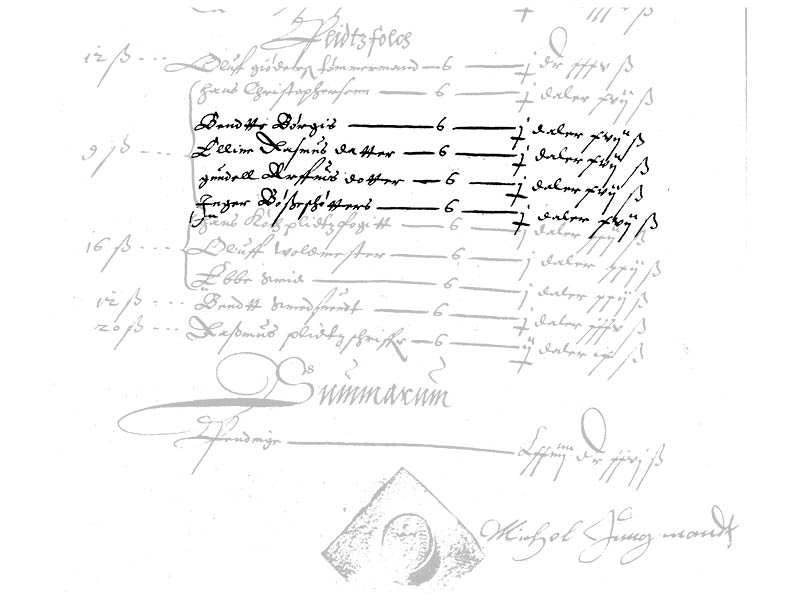Where are the women?
“A woman” whose name we do not know, was paid on 24 February 1612 for washing dirty napkins and tablecloths after the king stayed in the castle for a few days during the Kalmar War.
Most of the people in the documents from the fortress construction are men. Does that mean this was an entirely male workplace? The answer is of course no!
Many women from Halland were involved in the construction, but for various reasons very few of them are mentioned in the preserved pay sheets and receipts. At least we can find some!
One of the women who worked on the construction site for a long time was Inger Bösseschötters.
Judging by the name, she was, or had been, married to a rifleman. She worked here at least between 1610 and 1615.
After the high, thick stone walls had been built around the rock, the space between the rock and the stone wall had to be filled with earth and stone. Inger was involved with this work and probably her task was to transport earth in buckets or on a wheelbarrow. Under her name, the pay sheet from 1614 shows another woman, Kirstine Lauritzdatter, who worked together with Inger.

In the pay sheet above, from 1610, we find some other women:
Bendtte Børgis, Elline Rasmusdatter and Gundel Arffuisdatter, who probably had similar tasks as Inger and Kirstine.
Some women are only briefly mentioned in the accounts. Some were hired to wash napkins; others came here to deliver tallow candles. None of the many women who worked as servants inside the castle are mentioned in the documents.
Even though they were not at the fortress, many women from Halland were indirectly involved in the construction. When farmers were forced to leave their farms to work every day on the fortress construction, it was often wives and daughters who had to take care of the work on the North Halland farms on their own.
Others worked with their husbands in various trades, but since the men handled the contacts and received payment for the deliveries, the women’s names are not mentioned in the lists.
Video
Christopher Pihl has a PhD in history and is a researcher at Uppsala University where he mainly researches the work of women and men during the 16th and 17th centuries.
In the video in the exhibition, he talks about the women’s working conditions at the time of the fortress construction and ponders why we find so few women in the sources from the time.
